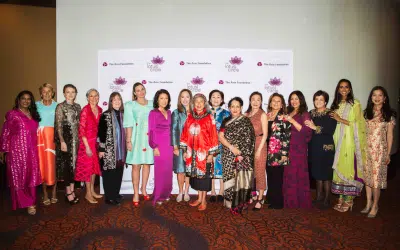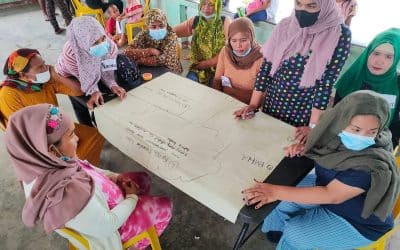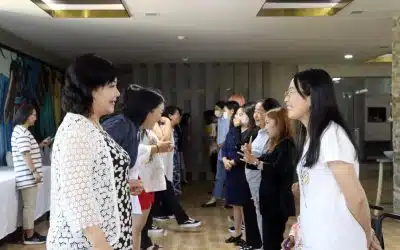InAsia
Insights and Analysis
Notes from the Field: Sri Lanka’s Revolutionary “Aragalaya”
July 20, 2022
Sri Lanka is riding the waves of revolutionary change. For the first time, irrespective of race, religion, or social class, Sri Lankans are collectively protesting against the growing hardships inflicted by the worst economic crisis the country has faced since independence. Everyday life has become increasingly difficult on the “paradise isle” since the outbreak of the Covid-19 pandemic, but the situation was exacerbated by the return of the Rajapaksa regime, which has been responsible for large-scale financial mismanagement and ill-advised policy decisions.
While the most pressing issue is a severe shortage of basic necessities—including food, fuel, and medicine—ordinary citizens have also been infuriated by the continued extravagances of politicians and their families. Frustrations peaked in March, as pockets of people across the island took to the streets to voice dissent against the government. On April 9, these scattered protests coalesced at the precinct of the Presidential Secretariat at Galle Face Green, swelling and transforming into the largest unified protest movement in Sri Lanka, now known as the Aragalaya—the Struggle of the People.
In the weeks that followed, Galle Face Green evolved from a mere protest site to a dynamic public forum where people from all walks of life and all corners of the island arrived in droves to proclaim a range of grievances, which had previously been met with apathy or polarization. Many protesters pitched tents, defiantly camping at the site day and night until their demands were met.

GotaGoGama protesters with their placards (photo: Mihiri Wikramanayake)
The site quickly became the primary hub of the Aragalaya and was named GotaGoGama, which translates to “Gota Go Village,” expressing the protesters’ chief demand, the resignation of President Gotabaya Rajapaksa. The combined efforts of resident and visiting protestors turned GotaGoGama into a small, flourishing village equipped with a community kitchen, portable toilets, a first aid center, a recycling center, solar power, a makeshift library, a legal aid office, a people’s university, and an art gallery.
During the day, GotaGoGama is a bustling hub with dozens of protestors volunteering in shifts to oversee and maintain the site and its operations. After hours, the atmosphere thickens into a vibrant blur of emotion, with impassioned speeches, silent protests, teach-ins, poetry readings, and open-air dramas amplifying the fervor of the protestors’ demands. Passing cars rhythmically sound their horns in encouragement.
The most remarkable feature of all is the scale of coordination and camaraderie among the protestors. Despite hundreds in attendance from every demographic, occupation, and subculture, GotaGoGama has remained astoundingly orderly, peaceful, and tolerant—this in a country not far removed from a 30-year civil war.

Protesters fill the streets of Colombo ahead of President Gotabaya Rajapaksa’s resignation. (Photo: Sakuna Miyasinadha Gamage)
Within weeks, the Aragalaya came to be seen as a symbol of unity, creativity, and political enlightenment. Its spirit began to spread nationally, as offshoots of GotaGoGama sprang up in Kandy and Galle. Sri Lankans worldwide have also been inspired by the Aragalaya, and protests have appeared in cities across Australia, Europe, and the United States in support of friends and family back home.
This sweeping sense of a shared Sri Lankan kinship has enabled GotaGoGama to persevere not only through the monsoon rains but also through several attempts to suppress, discredit, or provoke the peaceful protestors. On May 9, violence erupted across the island when progovernment supporters of Mahinda Rajapaksa, the former prime minister and brother of Gotabaya, attacked the GotaGoGama protesters and vandalized the site. Although the day ended in mayhem with the declaration of a state of emergency, the solidarity of the protestors thwarted their efforts and restored GotaGoGama within hours.
Dissent against the government is not a new phenomenon in Sri Lanka, but the peaceful ethos of GotaGoGama, along with its leaderless and nonpartisan status, make it different from past uprisings that have been marred by violence and propaganda. The movement has drawn strength and popularity from its capital location and youthful leadership, in stark contrast to what previous generations and those in underprivileged regions of the island, particularly in the war-torn North and East, experienced when they protested for their rights and freedom of speech.

The Aragalaya reaches the President’s house. (Photo: Thilina Kaluthotage)
Another distinction is that GotaGoGama is representative of all segments of Sri Lankan society and has attracted interfaith support. Members of the Buddhist, Christian, and Muslim clergy have been heavily involved in supporting the Aragalaya, and the site came alive with celebrations during Easter, Ramadan, and the Sinhala and Tamil New Year. These public demonstrations of unity are an historic phenomenon in a country that has been deeply divided along ethno-religious lines for decades. Regimes both past and present have pandered to the Sinhala Buddhist majority at the expense of the Tamil and Muslim minorities and used the resulting racial tensions to propel themselves into positions of power and impunity.
After fleeing from the mounting pressure of the Aragalaya, which has now reached its hundredth day, President Gotabaya Rajapaksa submitted his resignation on July 14. While the Aragalaya has now demonstrated the power of peaceful and determined protest, opportunistic factions have emerged within the movement in recent weeks seeking to exploit GotaGoGama for partisan ends rather than to acknowledge past grievances or build deeper unity.

Protesters’ placards on the gate of the president’s office (photo: Ruwangi Amarasinghe)
As these fissures threaten to grow, it is important to remember the central lesson of the Aragalaya, that when the public comes together in a unified expression of discontent, older prejudices, biases, and divisions can be left behind. This unity is the fundamental element needed to demand justice, transparency, and accountability from elected leaders, and to build the renewed Sri Lanka that rising and future generations deserve.
Maljini Ranaraja is a program officer in the Monitoring, Evaluation, and Learning Unit of The Asia Foundation’s Sri Lanka office. She can be reached at [email protected]. The views and opinions expressed here are those of the author, not those of The Asia Foundation.
About our blog, InAsia
InAsia is posted and distributed every other Wednesday evening, Pacific Time. If you have any questions, please send an email to [email protected].
Contact
For questions about InAsia, or for our cross-post and re-use policy, please send an email to [email protected].The Asia Foundation
465 California St., 9th Floor
San Francisco, CA 94104
The Latest Across Asia
News
April 25, 2024
Program Snapshot
April 18, 2024
News
April 17, 2024

2024 Lotus Leadership Awards
The Lotus Leadership Awards recognize contributions towards gender equality in Asia and the Pacific







0 Comments